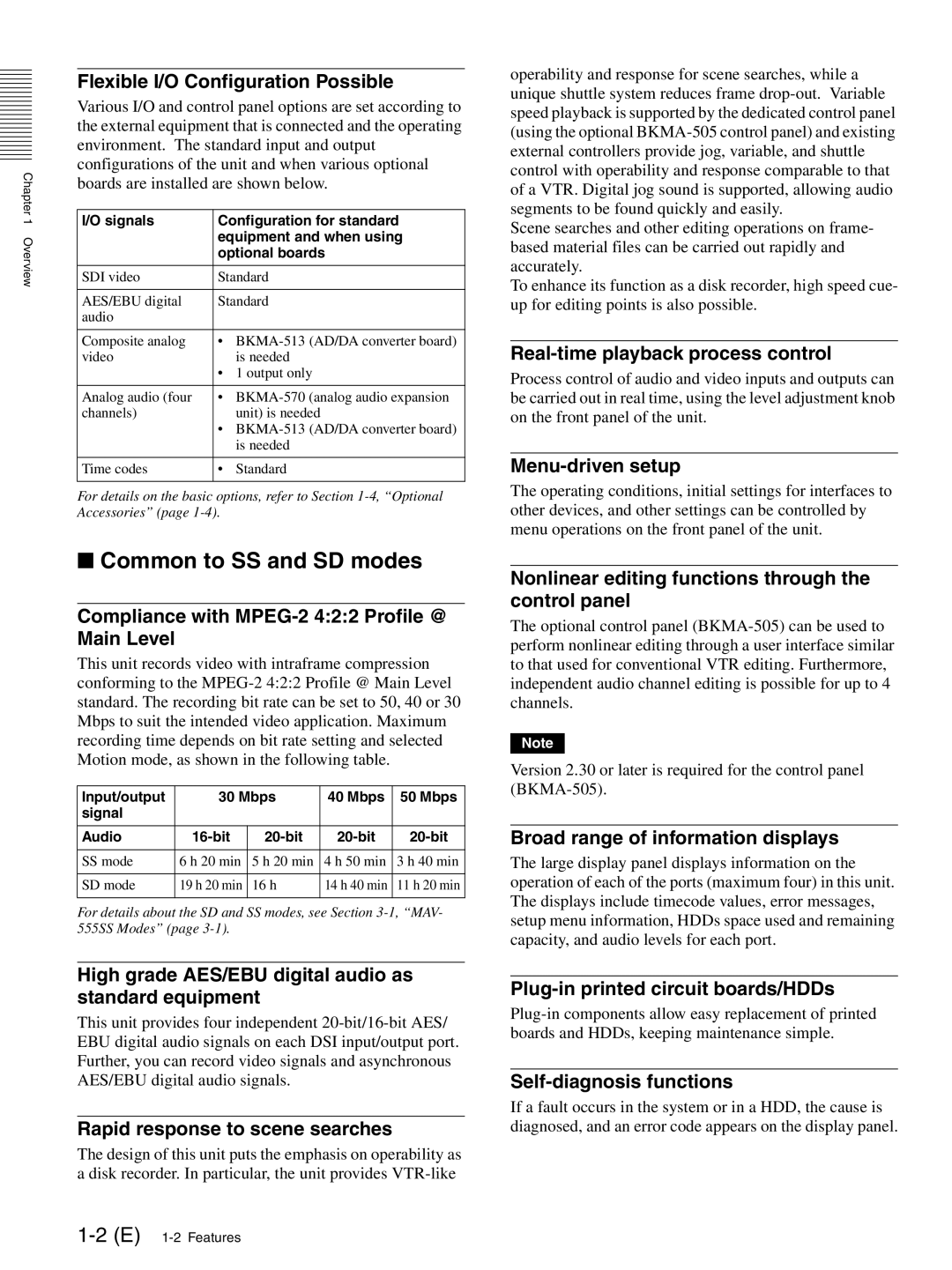
Chapter 1 Overview
Flexible I/O Configuration Possible
Various I/O and control panel options are set according to the external equipment that is connected and the operating environment. The standard input and output configurations of the unit and when various optional boards are installed are shown below.
I/O signals | Configuration for standard | |
| equipment and when using | |
| optional boards | |
|
| |
SDI video | Standard | |
|
| |
AES/EBU digital | Standard | |
audio |
|
|
|
| |
Composite analog | • | |
video |
| is needed |
| • | 1 output only |
|
| |
Analog audio (four | • | |
channels) |
| unit) is needed |
| • | |
|
| is needed |
|
|
|
Time codes | • | Standard |
|
|
|
For details on the basic options, refer to Section
■Common to SS and SD modes
Compliance with MPEG-2 4:2:2 Profile @ Main Level
This unit records video with intraframe compression conforming to the
Input/output | 30 Mbps | 40 Mbps | 50 Mbps | |
signal |
|
|
|
|
|
|
|
|
|
Audio |
|
| ||
|
|
|
|
|
SS mode | 6 h 20 min | 5 h 20 min | 4 h 50 min | 3 h 40 min |
|
|
|
|
|
SD mode | 19 h 20 min | 16 h | 14 h 40 min | 11 h 20 min |
|
|
|
|
|
For details about the SD and SS modes, see Section
High grade AES/EBU digital audio as standard equipment
This unit provides four independent
Rapid response to scene searches
The design of this unit puts the emphasis on operability as a disk recorder. In particular, the unit provides
operability and response for scene searches, while a unique shuttle system reduces frame
Scene searches and other editing operations on frame- based material files can be carried out rapidly and accurately.
To enhance its function as a disk recorder, high speed cue- up for editing points is also possible.
Real-time playback process control
Process control of audio and video inputs and outputs can be carried out in real time, using the level adjustment knob on the front panel of the unit.
Menu-driven setup
The operating conditions, initial settings for interfaces to other devices, and other settings can be controlled by menu operations on the front panel of the unit.
Nonlinear editing functions through the control panel
The optional control panel
Note
Version 2.30 or later is required for the control panel
Broad range of information displays
The large display panel displays information on the operation of each of the ports (maximum four) in this unit. The displays include timecode values, error messages, setup menu information, HDDs space used and remaining capacity, and audio levels for each port.
Plug-in printed circuit boards/HDDs
Self-diagnosis functions
If a fault occurs in the system or in a HDD, the cause is diagnosed, and an error code appears on the display panel.
